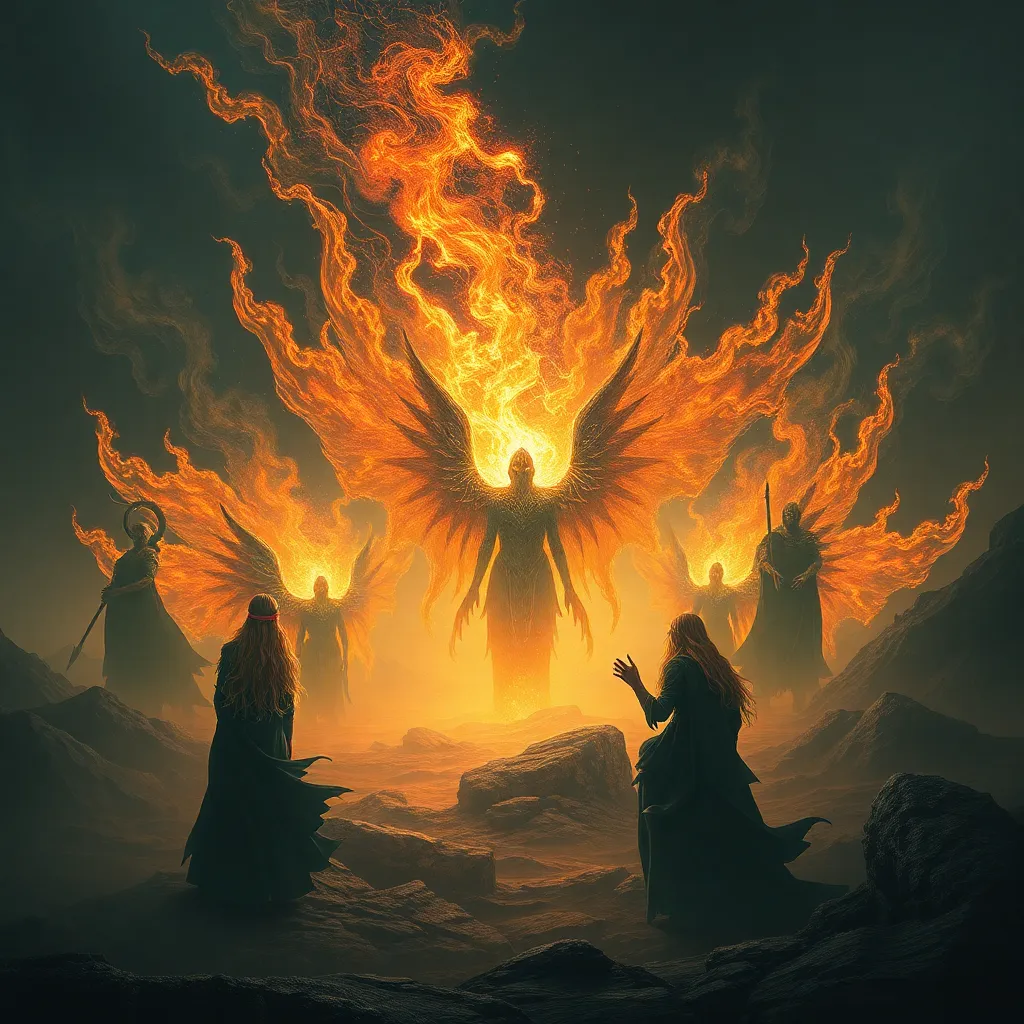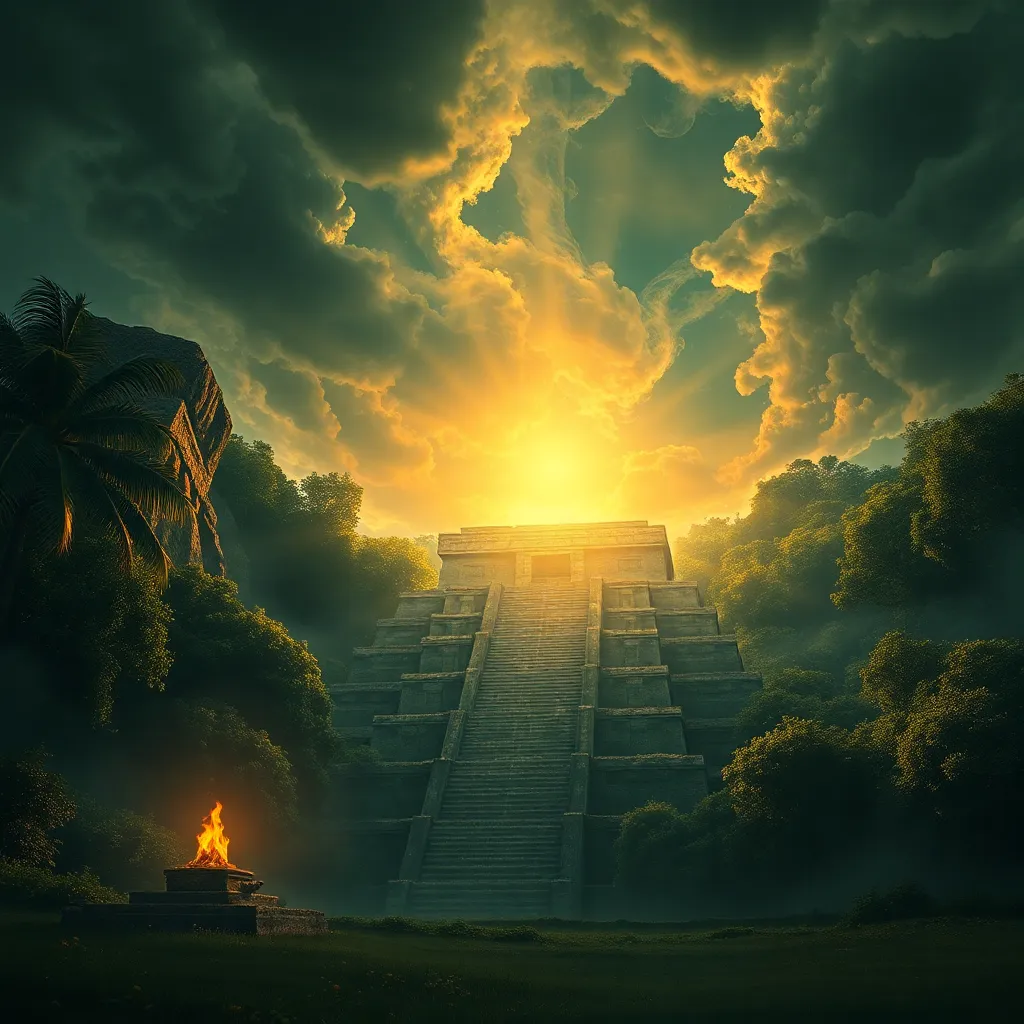The Ifrit and their Allies: Exploring their Relationships with Other Supernatural Beings
I. Introduction
The Ifrit, a prominent figure in Middle Eastern folklore, embodies both the chaos of fire and the complexities of supernatural existence. Often depicted as powerful beings made of smokeless fire, their narratives weave through ancient texts and oral traditions. Understanding the Ifrit’s relationships with other supernatural beings is crucial for appreciating their role in mythology and folklore.
This article will delve into the origins of the Ifrit, their roles in mythology, their allies, interactions with other supernatural entities, cultural variations, and their modern representations. Each section aims to provide a comprehensive view of the Ifrit and the rich tapestry of relationships that define them.
II. The Origins of the Ifrit
The Ifrit has deep historical and cultural roots, primarily found within Arabian and Islamic traditions. They are often considered a subgroup of the Djinn, a race of supernatural beings that can be both benevolent and malevolent.
A. Historical and cultural background
Historically, the Ifrit were mentioned in the pre-Islamic poetry of the Arabian Peninsula, where they were associated with the desert and various natural phenomena. Over time, their depiction evolved, especially within Islamic texts.
B. Mythological roots in Arabian and Islamic traditions
In the Quran, Ifrits are mentioned as powerful Djinn, particularly in the context of King Solomon, where they serve as both servants and adversaries. Their mythological roots illustrate their dual nature—capable of both construction and destruction.
C. Characteristics and traits of Ifrit
Ifrits are characterized by their immense strength, cunning intellect, and mastery over fire. They can shape-shift and often possess abilities that surpass those of ordinary Djinn. Their appearances are typically fierce and intimidating, embodying the chaos of flames.
III. The Ifrit’s Role in Mythology
The Ifrit occupies a significant role in various mythological narratives, often symbolizing the destructive and chaotic aspects of fire.
A. Representation of fire and chaos
As embodiments of fire, Ifrits represent both the creative and destructive forces of nature. In many tales, they are invoked during conflicts or disasters, highlighting their chaotic nature.
B. Common narratives involving Ifrit
- The tale of an Ifrit’s challenge to a human hero.
- Legends of Ifrits granting wishes with unforeseen consequences.
- Stories of Ifrits being summoned for protection or vengeance.
C. The dual nature: benevolent vs. malevolent portrayals
Ifrits can be portrayed as both protectors and aggressors, reflecting the duality of their nature. There are instances where they assist humans, while in other tales, they serve as formidable foes.
IV. Allies of the Ifrit
Within the complex web of supernatural beings, Ifrits often have allies that share traits or elemental connections.
A. Overview of supernatural beings often associated with Ifrit
Ifrits are commonly linked to various types of Djinn and elemental beings, forming alliances that enhance their narrative significance.
B. Djinn: Shared characteristics and differences
While Ifrits are a subclass of Djinn, they often differ in their elemental associations. Djinn can represent air, water, and earth, while Ifrits are primarily connected to fire. Their shared characteristics include:
- Shape-shifting abilities
- Intelligence and cunning
- Influence over humans
C. Other elemental beings: Fire spirits and their kin
In addition to Djinn, Ifrits are sometimes allied with other fire spirits, such as the Marid, who are known for their greater powers and strength. These alliances can lead to intricate narratives where the dynamics of fire spirits play a crucial role.
V. Interactions with Other Supernatural Entities
The relationships of Ifrits with other supernatural entities, such as angels and demons, are often marked by conflict and alliance.
A. Relationships with angels and demons in various myths
Ifrits frequently find themselves at odds with angels, representing the forces of good, while aligning with demons, who embody chaos and malevolence. This duality creates a rich narrative landscape.
B. Conflicts and alliances: Key stories and examples
Stories abound where Ifrits either clash with angels or form alliances with demons. Notable examples include:
- The conflict between Ifrits and the angel Gabriel.
- Alliances formed in tales of vengeance against humanity.
C. The Ifrit’s influence on other supernatural beings
The Ifrit’s formidable nature often influences other supernatural beings, leading them to either fear or respect the power of the Ifrit. Their narratives shape the behaviors and characteristics of other entities within folklore.
VI. Cultural Variations in Ifrit Relationships
The lore surrounding Ifrits varies significantly across different cultures and regions, leading to diverse interpretations and narratives.
A. Regional differences in Ifrit lore and allies
In some cultures, Ifrits are revered as protectors, while in others, they are feared as tempests of chaos. These variations reflect local beliefs and practices.
B. Cross-cultural comparisons, including Western adaptations
Western adaptations of Ifrit lore often transform these beings into more generalized demons or spirits, sometimes losing their unique attributes and connections to fire.
C. Modern interpretations and representations in media
In contemporary media, Ifrits are often depicted in fantasy literature, films, and games, showcasing their powers and complexities. This modern portrayal sometimes blends traditional elements with new interpretations of their nature.
VII. The Ifrit in Modern Context
The Ifrit continues to be a compelling figure in modern literature and film, symbolizing various themes and ideas.
A. Role in contemporary literature and film
Many authors and filmmakers incorporate Ifrits into narratives that explore themes of power, identity, and morality. They often serve as metaphors for inner turmoil or societal chaos.
B. Symbolism of the Ifrit in modern society
In modern society, Ifrits symbolize the ongoing struggle between order and chaos, reflecting contemporary challenges and fears. Their fiery nature can represent passion, anger, or destruction.
C. How relationships with other supernatural beings have evolved
Today, the relationships Ifrits have with other supernatural beings may be reimagined, often focusing on collaboration or conflict with figures such as angels or heroes rather than solely adversarial roles.
VIII. Conclusion
In summary, the Ifrit serves as a complex and multifaceted figure in folklore, representing both chaos and potential. Their relationships with other supernatural beings—whether allies or adversaries—enhance their narrative significance.
Understanding these relationships is crucial for a deeper appreciation of cultural mythology and storytelling. As we continue to explore the rich tapestry of supernatural beings, the Ifrit remains a vital area for future study, revealing insights into the human experience.



